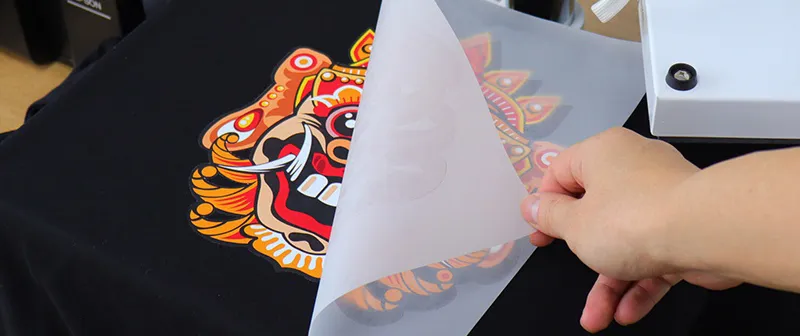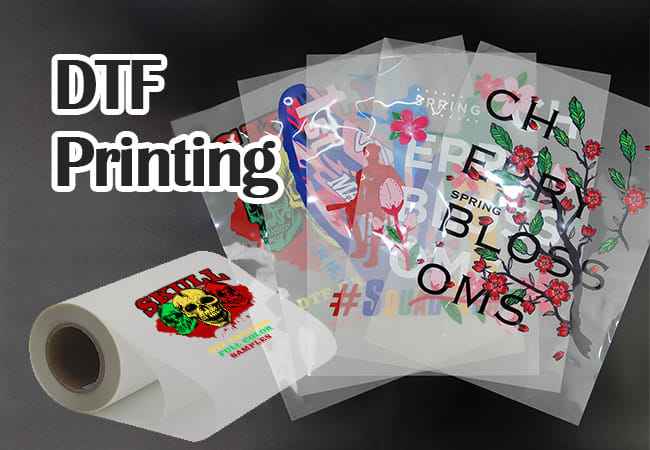Ingenious DTF Printing Solutions: Improve Your Apparel with Direct-to-Film Modern Technology
Ingenious DTF Printing Solutions: Improve Your Apparel with Direct-to-Film Modern Technology
Blog Article
Understanding DTF Printing: Idea for Achieving Vibrant and Sturdy Prints
On the planet of textile printing, accomplishing sturdy and vivid prints is a sought after ability that can elevate the high quality of your result. Mastering DTF (Straight to Film) printing requires a blend of technical expertise, accuracy, and interest to detail. From selecting the best products to make improvements print setups and improving post-printing finishing strategies, there are countless elements that can influence the result of your prints. Understanding how to browse these details can make all the difference between a mediocre outcome and a genuinely outstanding one.

DTF Printing Fundamentals
For those new to the globe of fabric printing, comprehending the basics of DTF printing is important to mastering this ingenious technique. Direct to Movie (DTF) printing is a modern method that involves moving designs from an unique movie onto different fabrics making use of a warm press. Unlike standard techniques like screen printing, DTF provides advantages such as lively shades, intricate describing, and the ability to publish on varied materials like cotton, polyester, and blends.
The process begins by publishing the style on a special DTF movie using a compatible printer with CMYK or CMYKW ink collections. When the layout is printed, it is then healed with a warm press to develop a lasting and durable print. DTF printing is known for its ability to recreate intricate layouts with high precision and color precision, making it a prominent selection for organizations aiming to develop customized clothing, advertising products, and much more.
Selecting the Right Materials

The sticky powder acts as a bonding representative in between the printed layout and the fabric, so it should have solid bond residential or commercial properties to ensure a long lasting and durable transfer. By meticulously choosing the ideal products for DTF printing, printers can boost the high quality, vibrancy, and durability of their prints.
Optimizing Print Settings
When aiming to attain the best outcomes in DTF printing, meticulous attention to enhancing print setups is vital for making sure specific and high-grade transfers onto fabrics. One essential facet to think about when enhancing print settings is the resolution.
An additional essential setup to enhance is the print speed. Finding the best equilibrium between speed and top quality is necessary. While increasing the speed can enhance performance, it may compromise the last print's clarity and color saturation. Trying out with various rates and observing the results can assist establish the optimum setting for every print work - DTF Printing.
Furthermore, adjust color profiles and making sure appropriate color monitoring are vital for accomplishing regular and exact colors throughout various prints. By adjusting shade setups and profiles, printers can lessen shade deviations and produce uniform outcomes, boosting the overall print high quality and customer contentment.
Preparing Artwork for DTF Printing
To ensure optimum cause DTF printing, thorough attention to detail is necessary when preparing art work for transfer onto textiles. Begin by picking high-resolution photos to keep clarity and intensity in the final print. Vector graphics are chosen as they can be easily scaled without losing quality. Transform the art work to CMYK shade mode to ensure that the shades translate precisely from display to print. Adjust the shade degrees and contrast as required to enhance the vibrancy of the design. When adding message to the artwork, choose font styles that are clear and appropriate for the designated dimension. Bear in mind to mirror more info here the last style prior to publishing to make sure that it moves appropriately onto the garment. In addition, take into consideration the textile type and color when selecting the art work, as these elements can impact the last appearance. By following these actions and paying attention to the information, you can prepare art work that is maximized for vivid and resilient DTF prints.
Post-Printing Finishing Methods
Executing efficient post-printing finishing strategies is critical to boosting the resilience and visual charm of DTF prints on textiles. As soon as the printing procedure is complete, applying heat to the published design is vital.
After warm pressing, peeling off the pet dog film carefully is a critical action. This process should be done slowly and gradually to stop any kind of damage to the print. As soon as the movie is eliminated, the print may require added curing time to further establish the ink into the material. This step aids boost the washability and sturdiness of the Check This Out print, guaranteeing it can stand up to multiple clean cycles without fading or breaking.
In addition, cutting any excess movie around the style can provide the last print a clean and expert look. Making the effort to properly finish DTF prints post-printing can considerably impact the overall top quality and long life of the textile style.

Conclusion
To conclude, grasping DTF printing calls for a detailed understanding of the fundamentals, choosing suitable materials, optimizing print settings, preparing artwork effectively, and utilizing post-printing ending up methods. By following these tips and techniques, one can attain vibrant and durable prints that meet their wanted high quality requirements. Constant technique and focus to information are crucial in attaining effective end results in DTF printing.
From selecting the right materials to make improvements print settings and refining post-printing finishing methods, there are various factors that can affect the result of your prints. Unlike typical approaches like display printing, DTF provides benefits such as vibrant shades, elaborate outlining, and the capacity to publish on diverse products like cotton, polyester, and blends.
Once the style is published, it is after that healed with a heat press to produce a long-lasting and sturdy print.When intending to achieve the finest results in DTF printing, meticulous focus to maximizing print setups is crucial for making sure exact and top quality transfers onto fabrics.In final thought, grasping DTF printing requires an extensive understanding of the essentials, picking ideal products, maximizing hop over to these guys print setups, preparing art work successfully, and making use of post-printing ending up strategies.
Report this page